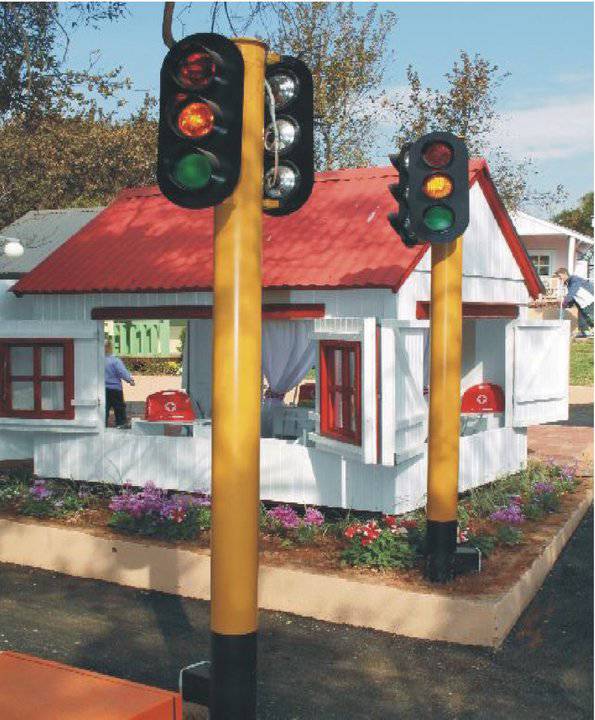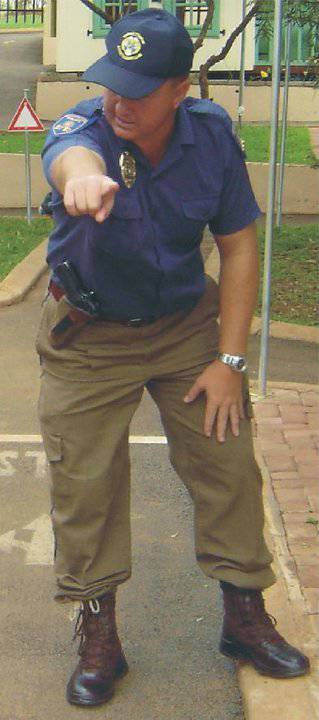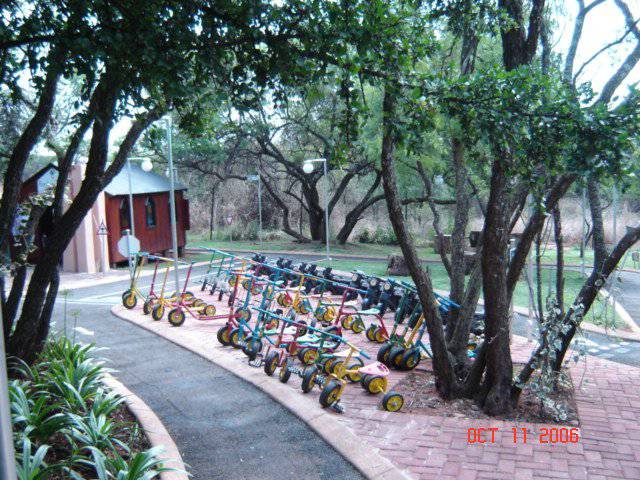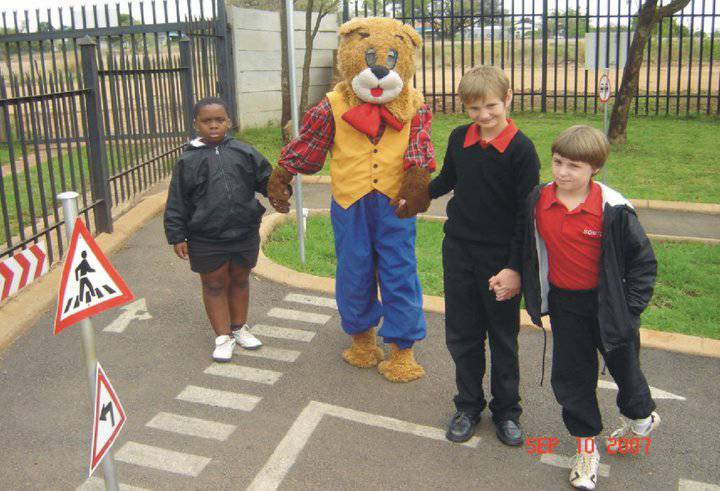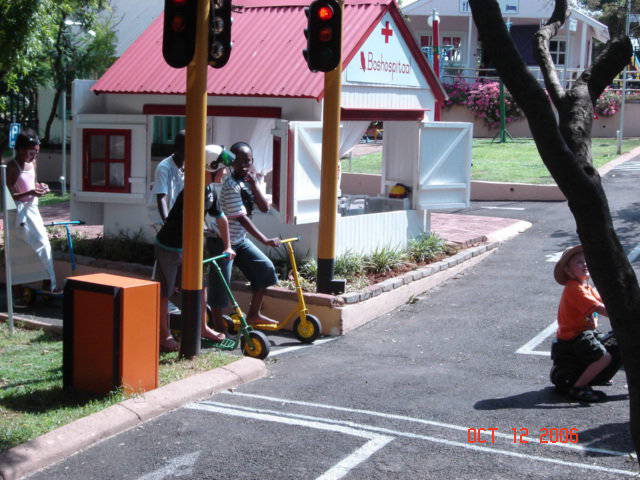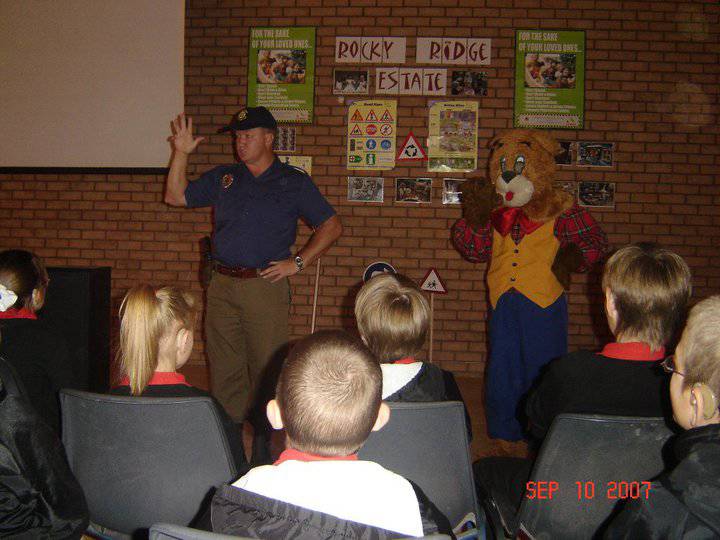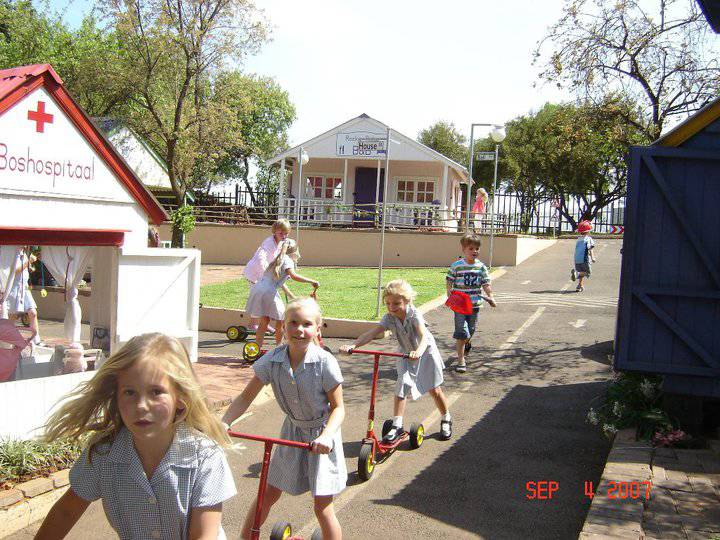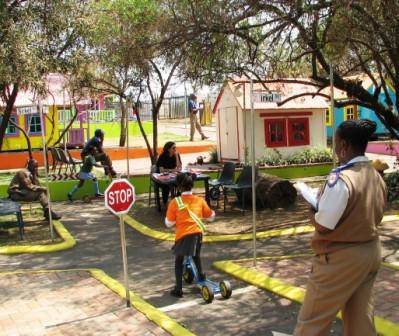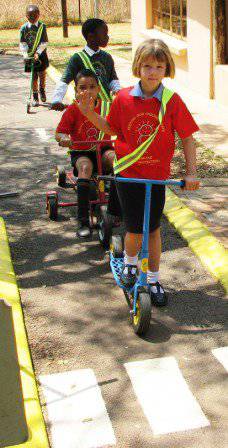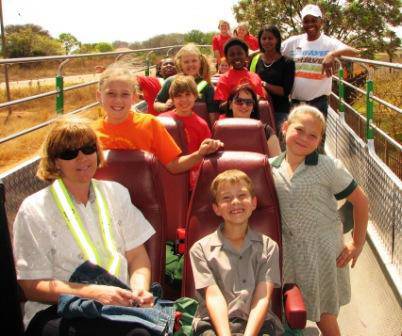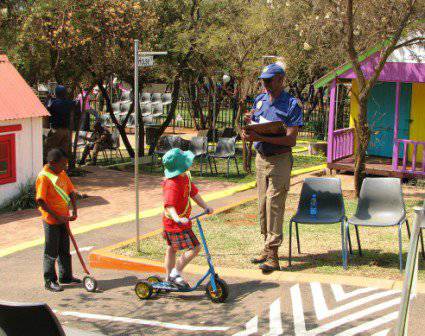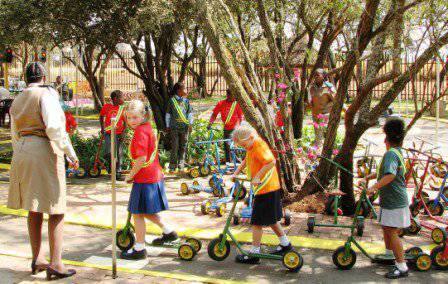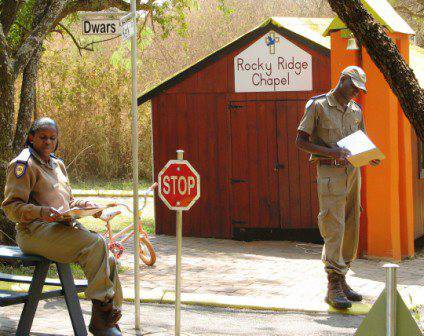ROAD SAFETY EDUCATION FOR OUR YOUTH
Fundraising campaign by
Yolandi Hendrickse
-
US$0.00raised of $150,000.00 goal goal
Campaign Story
ROAD SAFETY EDUCATION FOR CHILDREN
South Africa has amongst the worst road trauma rates in the world
17,077 PEOPLE KILLED
2,974 CHILDREN KILLED
Medical Research Council Injury Mortality Survey 2012
Serious injuries uncounted, guessed at over 100,000 per annum
Road safety in South Africa has become a serious problem - a problem that is addressed by numerous entities to establish effective road safety management, safer roads and vehicles as well as safer road users. It is however abundantly clear that very little is being achieved to change the situation – very few people at ground level is even aware of the initiatives or seldom get the opportunity to benefit from any of the programmes. The education of the broader public is critical to ensure ‘Safer Road Users’.
The focus of road safety training should be on firstly educating our children as they are the most vulnerable and precious portion of society - but unfortunately the envisioned road safety training at schools is a cumbersome process and the implementation of road safety as a recognized subject (or even as part of the subject of Life Skills) has not materialized as yet.Educating children about road safety requires a comprehensive approach through all phases of development to ensure that we produce safer road users for LIFE!
Children’s behavior can’t be explained in terms of just one developmental area.
It is the interaction of the cognitive, social/emotional and physical aspects of their development that puts children at risk in and around traffic.
The focus of road safety education for children should be on their role as:
i)Accompanied pedestrians in traffic (3-5 years)
ii)Unsupervised pedestrians/cyclists/passengers in traffic (6-12 years)
iii)Teenage road user (13 – 15 years)
iv)Vehicle user on the road (16-18 years)
Educating the younger generation must play an important part in saving lives.We believe that this process is a long term process and that educating the children about road safety will not only save lives - but will make the next generations’ better motorists.
The Problem
Road safety in South Africa is a critical problem and according to the Road Traffic Management Corporation (RTMC) approximately 14,000 people lost their lives in fatal crashes in South Africa during 2012.
A large percentage of these fatalities involve pedestrians. The percentage ranges between 30% and 40% each year.
Significant portions of these pedestrians are children.In many developing areas the majority of children are pedestrians who walk to school or use public transport. This increases their risk to traffic hazards significantly.
When attempting to address road safety issues with children the following factors should be considered to ensure the best possible ‘fit’ in order to produce the desired results – instilling life long road safety habits to ensure safer road users for LIFE!
Behavior Factors
Children is known to behave in certain ways in different situations – their behaviour is influenced by their social, emotional and physical aspects as well as their cognitive development stage.The following is a summary of some of the fundamental behavioral characteristics of each of the focus groups to be considered in road safety education:
Pre-primary School Road Safety (3 – 5 years)
Impulsive and unpredictable
Limited attention span and insight
Tendency to ‘dart’ out without thinking
Uncontrolled emotional outbursts
Easily distracted by less important objects
Primary School Road Safety (6 – 12 years)
Inadequate norms and values system
Limited traffic experience and insight
Impulsiveness with reference to group actions
Stunts and tricks to impress or to be funny
Tendency to imitate incorrect behavior
Secondary School Juniors (13 – 15 years)
Irresponsibility, aggressiveness and recklessness
Limited insight into the importance of traffic rules
Attempt to do as much as possible at the same time
Accelerated growth limits co-ordination ability
Receptive to external influences
Secondary School Seniors (16 – 18 years)
Inability to think in terms of possibilities
Experiments with different forms of social behavior
Limited risk perception
Group pressure and rebellious behavior
Overestimation of speed and strength
Environmental Factors
The environment in which a child lives has a significant impact on the type of transport and traffic they are exposed to and this needs to be taken into consideration when designing an education plan for children.
Socio-economic status often determines the manner in which users utilise transportation systems and therefore roads, sidewalks, etc.In our country with a population of more than 50 million people we are faced with the challenges associated with different socio-economic levels.These levels impact on the mobility of road users – the availability of transport, funds to use transport, roads system, type of transport (i.e. developing communities have higher pedestrian traffic).
Children in areas with a lower income level, are typically more exposed to traffic, as they often start walking to school or using public transport alone at an earlier age. This necessitates that more effort be made with their road safety education at an earlier stage.With social problems, the focus of parents is on other social problems and not on educating their children about traffic safety.
Some of the more common environmental related ‘problems’ observed in communities:
Children unable to identify safe crossings
Children following the example set by others
General lack of knowledge regarding infrastructure and road signs
General lack of community and parental involvement in Road Safety
Educators do not have any confidence in road skills of children – children more afraid of cattle than cars
General lack of involvement by local government to implement scholar patrols at schools
Lack of enforcement (traffic officers) translates into dangerous road safety practices
General lack of infrastructure – children who have never seen a traffic light and will not know how to use it
The Solution
In order to address the need to educate children about road safety, the following means is identified as being the most effective and sustainable.
1.Junior Road Safety Training Centres
This is a simulated road environment where children can learn to use roads safely and responsibly without being exposed to life-threatening traffic hazards.
Many forms of these centres exist in South Africa, but very few is utilised effectively or even maintained to a level where children can use the facilities safely.Some centres are equipped with tri-cycles, others with plastic scooters. The layout in most cases is focused on the children driving in the road with these vehicles and learning the basics of stopping, obeying a traffic signal, etc.
The observation made at all these facilities was the fact that they all focus on teaching children driving rules and not so much road safety rules that applies to pedestrians. It was also found that the temporary training facilities that are marked out on parking areas for example, do not provide a realistic environment to function as a simulation of real life.
Our Proposal
Consideration should be given to the principle of providing a permanent facility as opposed to a temporary facility. Providing a permanent facility has the benefit that it becomes a visible asset of the community.A privately owned facility which is incorporated with other business streams will ensure the maintenance and utilisation of the facility in its full capacity.
Children follow the example of their seniors in the environment within which they live. It is therefore important that the training facility resembles real “adult” life as much as possible.
The Junior Road Safety Centre identified for this project were constructed to resemble a familiar real life “town”. The materials selected for the road surface, walkways and adjacent buildings were similar to that in the local road environment, but on a smaller scale. Different ‘buildings’ are erected to replicate the town where children can further interact their ‘adult’ life.This ensures a fun-filled outing for children where playing becomes learning!
2.School Road Safety Education Programmes
Training programmes in the classroom, educating children with plays, booklets, games, and training them in real life scenarios.
Road safety education in South Africa is addressed at several levels. Unfortunately, road safety education is not part of the formal curriculum of the Department of Education. The responsibility is with the provincial governments and is normally handled by the provincial department of community safety or traffic department.
Schoolteachers mostly use their own initiative and educate children on a few basic aspects of road safety. In most cases this is inadequate and because it is not part of the curriculum, it does not receive the attention and priority it should.
Our Proposal
The BBB-SDL (Building Blocks for Becoming a Safe Driver for Life) Programme is designed to educate children through all ages ensuring safer road users for LIFE!
The comprehensive training programme is divided into the following sections:
- Early Childhood Road Safety (3 – 5 years)
- Primary School Road Safety (6 – 12 years)
- High School Student Drivers (13 – 18 years)
- Be Street Wise (Junior Phase)
- Learner and Driver Licence Training (Senior Phase)
All the training is designed to be FUN! Children embed knowledge through experience and the courses aim to teach and transfer knowledge in a practical age appropriate manner.Each of the component can be presented as a separate learning intervention.It is fully mobile and can be conducted at the Road Safety Centre OR at the school.
Conclusion
Road safety education for children requires a comprehensive approach, including involvement from parents, educators and senior members of the community. A comprehensive approach also includes training programmes in the classroom, educating children with plays, booklets, games, and training them in real life scenarios.
A Junior Traffic Training Centre has the benefit that it provides a safe environment where children can be taught these basic skills in a simulated real life environment. The facility also becomes an asset to the community and a visible symbol of road safety.
The property housing the Junior Road Safety Centre is for sale at a very reasonable market related price of R 2,900,000-00. It is situated in an area that has been identified by the Tshwane Council as a developmental zone as part of their economic development strategy.
The property is zoned for EDUCATIONAL usage and comprises of:
- a 430m2 hall (seats 220 – 250 in audience style) with two offices and toilets for ladies & gents and entrance hall
- 260m2 school building/offices (was previously utilized as a pre-school ) Can be used for learners license computerized classes
- two lapas (total about 260m2) with toilets, kitchen and area that can be used for a coffee shop and food court
- very unique 800m2 custom built Fantasy Mini-Town for kids (utilized for school outings on road safety education)
- beautiful gardens with two play parks for kids
- 3170 m2 parking area - that can be used for drivers license parking practice
- two workers houses and bathroom house with electricity
This property is situated conveniently 15 minutes from Pretoria city centre, and 50 minutes from Johannesburg, as well as only minutes away from the N1 (Polokwane) highway. Thousands of cars travel past the property on a daily basis. A big advertising board and signage are visible from the adjacent main road. The property is fenced (palisade and concrete) with an electrical gate. A natural rock "koppie" with lots of trees gives this property a very special ambiance. Neat gardens and buildings as well as a big parking area complete the picture.
We would like to keep this road safety centre going!!
How YOU can help…
Our request for funding is directed towards individuals, businesses and organizations sharing our vision and commitment to make a difference by contributing their capital resources by means of:
- Monthly cash donation towards operating expenses to ensure sustainability of the venture
- Sponsorship agreements where our services can be offered to your child’s school i.e. Junior Road Safety Talk (at the School) OR Play Day (at the Track)
- We also provide learners & drivers license training to unprivileged people in desperate need, getting a license can open doors to a better future. Not only can it saves lives by being a legal road user, it can also improve someone’s life by obtaining a job.
If you would like more information or to make a sponsor towards safer roads, please be in contact...
Organizer
- Yolandi Hendrickse
- ZA
No updates for this campaign just yet


